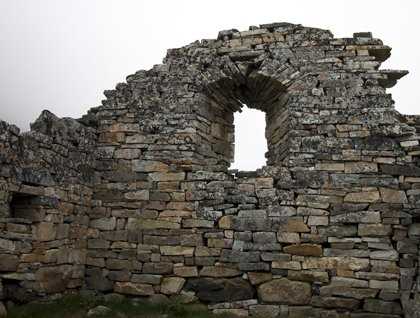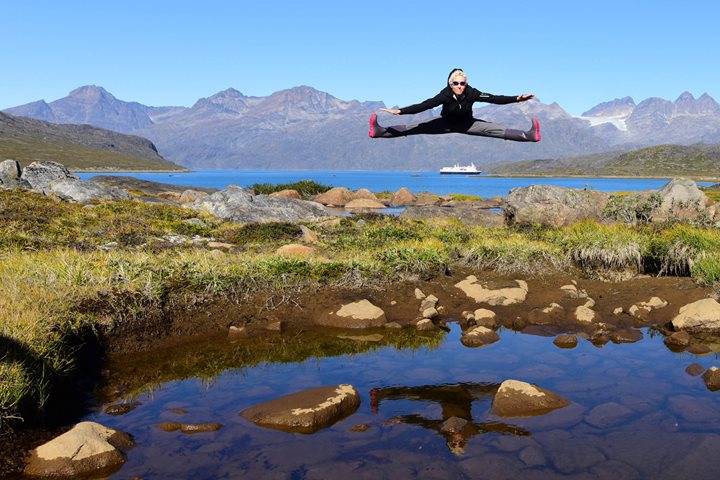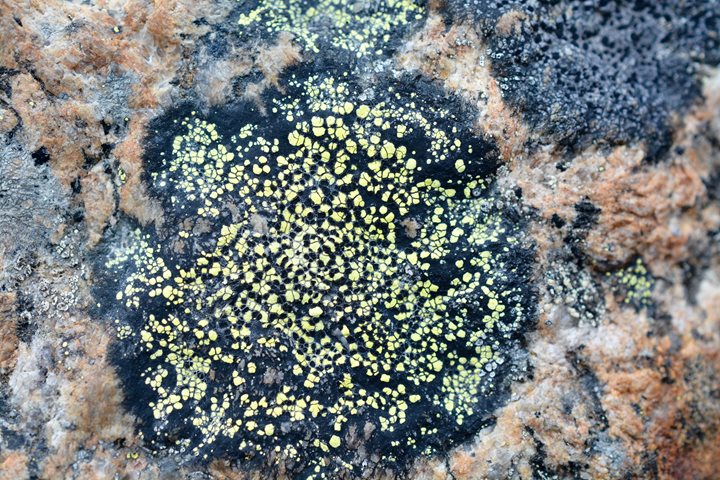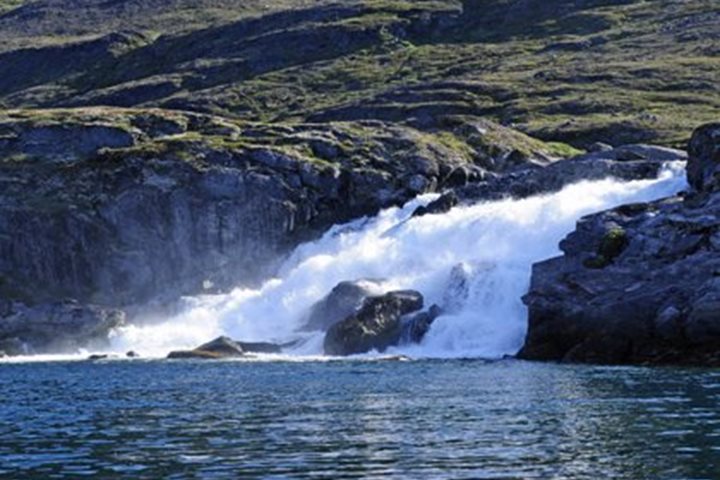Today’s adventures began with a hike along the stark, rugged terrain of Hvalsey to view Greenland’s best-preserved Norse ruins. Over a thousand years ago, a thriving community of intrepid settlers chose to farm in some of the harshest conditions in the North Atlantic. The one hundred inhabitants left behind a Catholic church, banquet hall, and a now grass-covered long house, an indication of their prosperity. Numerous plants provide details about how the Norse used the harsh landscape to their advantage in order to survive everyday life. While there are still many questions about the disappearance of the Norse culture, it is surmised that when the climate changed, they were forced to move to more hospitable lands.
From Hvalsey, National Geographic Explorer traversed along the coast to the nearby town, Qaqortoq, where 3,200 Greenlanders reside in colorful houses on steep granite slopes. Stone carvings of Inuit faces and scenes created by an artist who was inspired by her experience as a child in this community, honor the town’s rich cultural history. In addition, Qaqortoq is recognized as Greenland’s educational center; in fact, it is here that the country’s first school was established in the 1860s. As guests wandered through town, they were given glimpses of everyday life—children played soccer, women donned their traditional Inuit clothing, caribou heads and fish dried, and fishing boats went in and out of the harbor. A stroll into the town’s museum further showed the community’s commitment to preserving its rich heritage.
As a wrap-up to the day, guests were treated to a wide spread of tasty local delicacies, including locally brewed beer and a variety of seafood samples. Back on the ship, a local Greenlandic storyteller captivated the audience with his tales of love and adventure, accompanied by a traditional Inuit drum.






